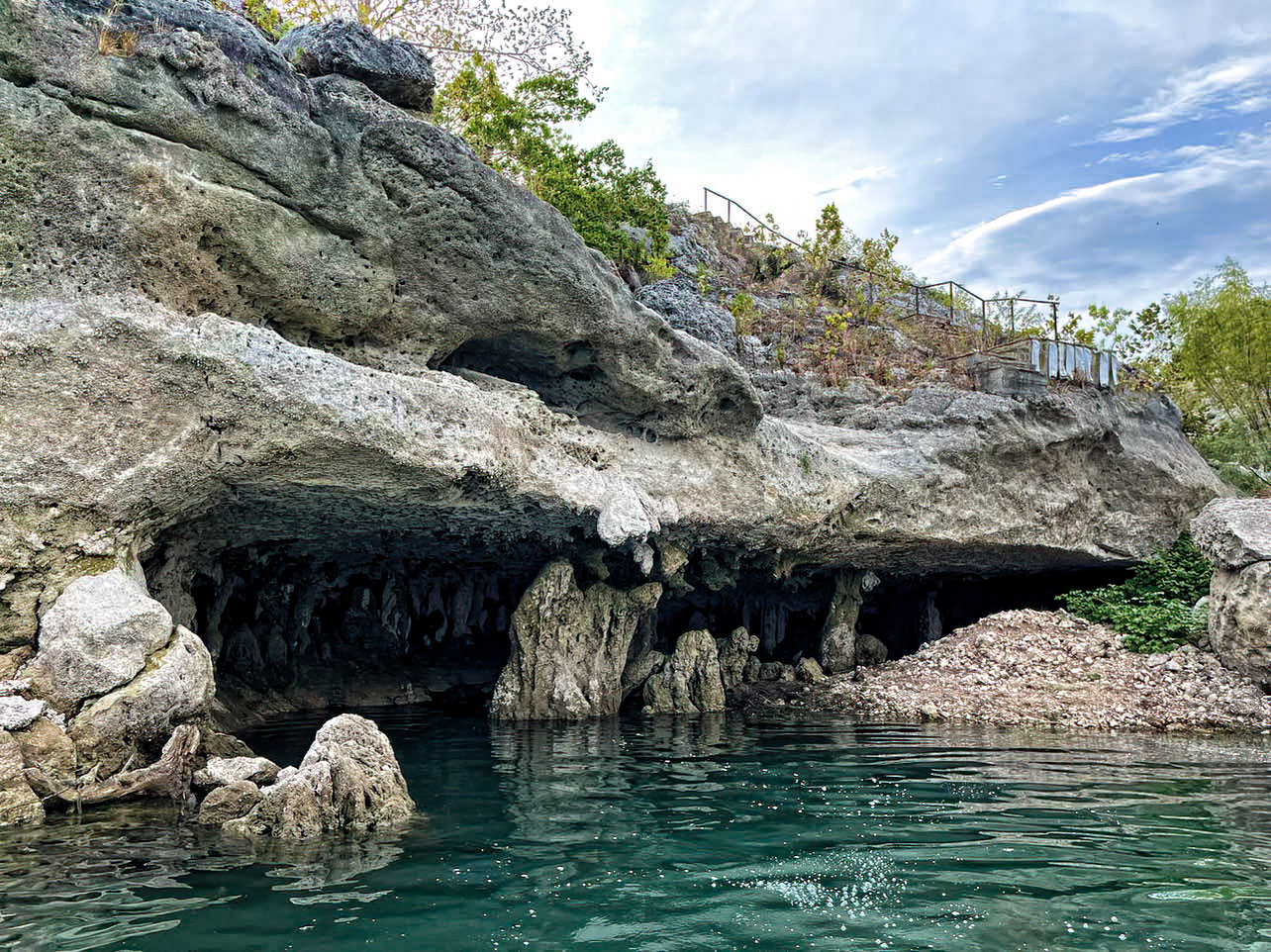On Wednesday, Canyon Lake High School senior Drew Anderson rode his jet ski straight off the lake and onto the muddy floor of Canyon Lake’s newly discovered cave near Party Cove.
He describes the former underwater chamber as “cold and wet” and plans to return today with a metal detector.
Ethan Perrine with Austin-based UT Grotto, a nonprofit dedicated to exploring, restoring and conserving caves, says that’s not a good idea.
Structural Concerns
The cave has been submerged since the lake was filled in the early 1960s and its structural integrity is questionable.
“Imagine exploring a house or any other structure (that’s been) underwater for however many years,” Perrine said. “You can’t take the ceiling and the walls for granted. The best way to dislodge and hit your head or crush your foot is going crawling around what’s effectively a stone tunnel submerged in water for an intermittent period of time.”
Canyon Lake sits on federal property managed by the U.S. Army Corps of Engineers (USACE) and it is unclear whether rangers will try to ban exploration by the public. USACE spokesperson Clay Church expects a statement will be issued possibly as early as Friday.
Scientific Investigation
Perrine believes the karst cave is part of the Honey Creek Hydrostratigraphic Unit. Colleagues will visit the cave on Sunday to photograph, document and collect coordinates.
George Veni, whose Ph.D dissertation was on the Lower Glen Rose Aquifer (part of the Middle Trinity), is the data manager for the Texas Speleological Survey, a nonprofit that collects and archives data on Texas caves and karst features. He said only one cave is known to have been inundated by Canyon Lake and this cave is not it.
“I have some friends checking on it this weekend,” he said. “Until they do so we can’t be certain if it is a hydrogeologically significant cave — there are geologic indications of this too — or an insignificant shelter cave carved into a cliff wall by the river thousands of years ago and of no relationship to any aquifer. There are geologic indications of this, too.”
Marcus Gary, whose Ph.D, dissertation focused on defining the geological processes that shaped one of the deepest underwater cave systems in the world, is principal geoscientist with the Edwards Aquifer Authority.
He said large springs are known to have been submerged by Canyon Lake.
“It’s not unexpected to see that happening with the lake dropping so much,” he said.
This latest cave discovery is unique.
The only other reservoir known to have caves is the Amistad Reservoir, whose dam is operated by the International Boundary Water Commission and shoreline by the U.S. National Park Service.
That reservoir is fed by one of the biggest springs in Texas.
Social Media Buzz
The so-called Party Cove cave went viral earlier this week after a Canyon Lake resident posted images on Facebook. Nobody knew it was there until lake levels sank low enough due to the ongoing drought.
Anderson, who also dives, said scuba gear is not required to access the cave.
“I just pulled my jet ski into the entrance of the cave and beached it,” he said. “I’d say the cave is close to fully out of the water but if I had to guess, around a quarter of it is filled with mud/quicksand type stuff, to which I stepped on and sunk in. In some areas of the cave I would estimate it goes 50 feet back. On one of the back walls of the cave there was an engraving dated 1913, which is pretty cool.”
Historical Context
The phrase “Bierle Dec. 2 1913” was carved in the back wall of the cave, where it’s dark and easy to miss.
The Texas State Historical Association says a Charles Beierle ran a post office from his home along the Guadalupe between 1893 and 1907 when a star route from New Braunfels was established.
MyCanyonLake.com has reached out to the Comal County Genealogy Society to see if more information about the family is available and whether there might be living descendants.
This story will be updated as more information becomes available.
Photos by Drew Anderson
Please review our commenting rules before submitting a post.




